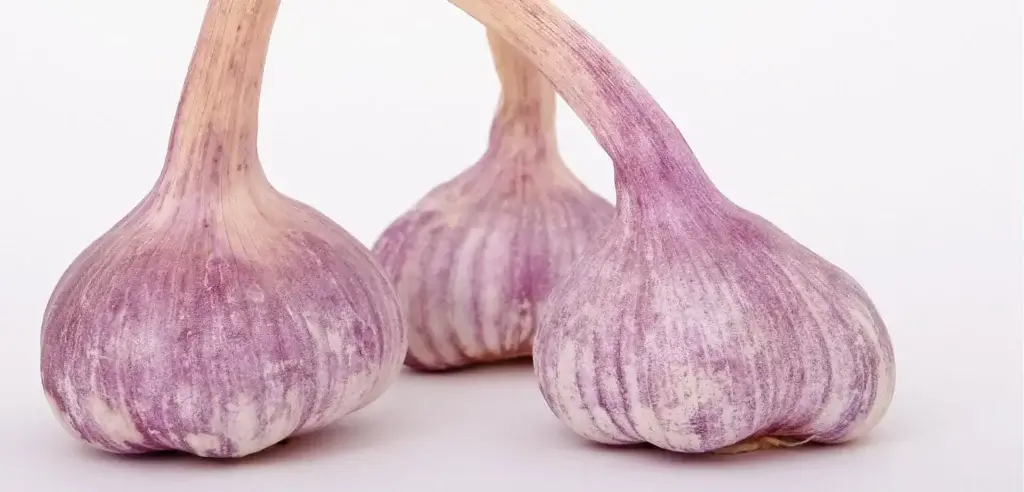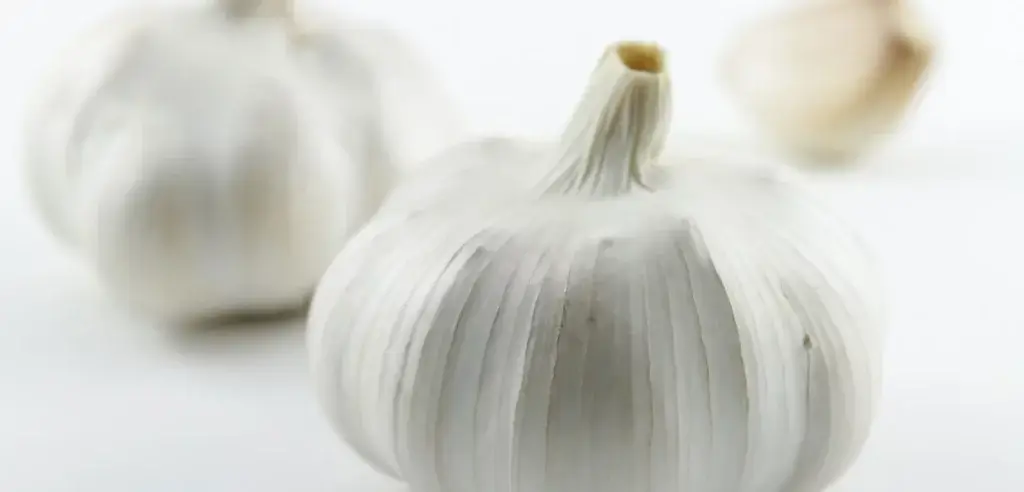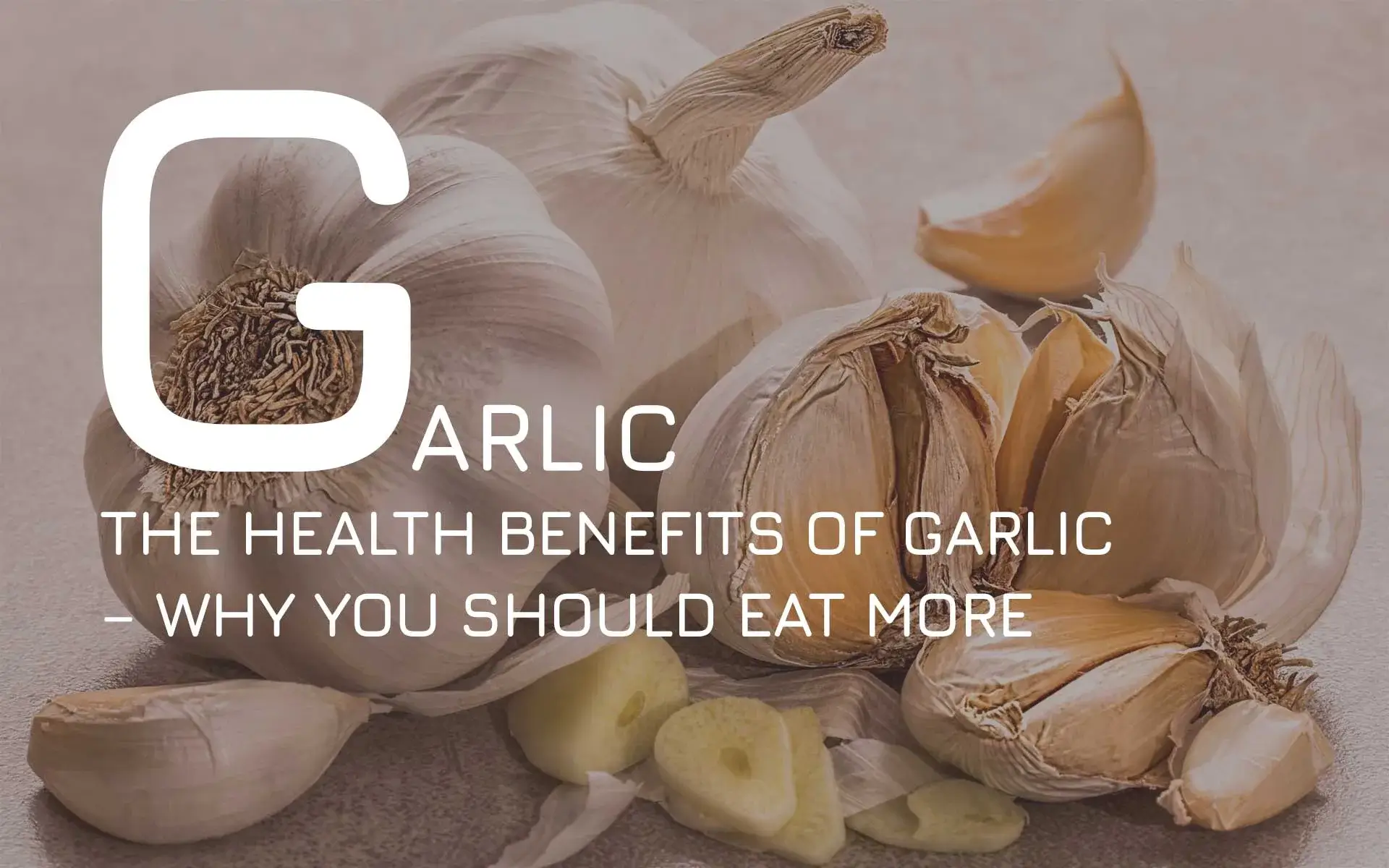The Health Benefits of Garlic – Why You Should Eat More
The Health Benefits of Garlic are many. Garlic is a type of bulb that is often used in cooking. It has a strong taste and smell and is believed to have many health benefits. It contains high levels of antioxidants, which can help protect the body from disease. It also has anti-inflammatory properties, which can help reduce inflammation in the body. Additionally, garlic is a good source of vitamins and minerals, including vitamins C, B6, and manganese.
What is Garlic?
Garlic is a perennial plant in the amaryllis family (Amaryllidaceae) that includes chives, leeks, onions and scallions. It grows in the form of a bulb underneath the soil with long green shoots coming out from the top and roots extending downward. Garlic is native to central Asia but grows wild in Italy as well as Southern France. The bulb of the plant is what we use as a vegetable.
Garlic varieties
German Porcelain Garlic: German Porcelain Garlic is a rare variety of garlic that is white in color. It has a milder taste and a sweeter smell than other varieties of garlic. This type of garlic is often used in cooking because it doesn’t overpower the taste of other ingredients.
Northern White Garlic: Northern White Garlic is a type of garlic that is white in color and has a milder taste than other types of garlic. This type of garlic is often used in cooking because it doesn’t overpower the taste of other ingredients.
- Music Garlic: There is also a type of garlic called Music Garlic. Music Garlic is a rare variety of garlic that is pink in color. It has a stronger taste and smell than other varieties of garlic. This type of garlic is often used in cooking because it has a more pronounced flavor than other types of garlic.
- Vietnamese Red Garlic:There is also a type of garlic called Vietnamese Red Garlic. Vietnamese Red Garlic is a type of garlic that is red in color. It has a stronger taste and smell than other varieties of garlic. This type of garlic is often used in cooking because it has a more pronounced flavor than other types of garlic.

- Italian Late Garlic: Italian Late Garlic is a type of garlic that is purple in color. It has a stronger taste and smell than other varieties of garlic. This type of garlic is often used in cooking because it has a more pronounced flavor than other types of garlic.

- Elephant Garlic: There is also a type of garlic called Elephant Garlic. Elephant Garlic is a type of garlic that is much larger in size than other types of garlic. It has a milder taste and a sweeter smell than other varieties of garlic. This type of garlic is often used in cooking because it doesn’t overpower the taste of other ingredients.

- Black garlic: Black garlic is made from regular garlic that has been aged and fermented for a period of time. The process of aging and fermentation changes the color and taste of the garlic. Black garlic has a sweet taste and a milder smell than regular garlic. This type of garlic is often used in cooking because it doesn’t overpower the taste of other ingredients.

Garlic Nutrition Facts
Garlic is a member of the onion family and is a common ingredient in many cuisines. It has a strong, pungent flavor and is known for its health benefits. Garlic is a good source of vitamins C and B6, as well as manganese and selenium. It also contains small amounts of calcium, copper, iron, phosphorus, and vitamin B1. Garlic is believed to boost the immune system and protect against heart disease, cancer, and other illnesses. l keep for up to two weeks when stored properly.
1 garlic clove 3 grams of garlic contains the following nutrients:
- 4.5 calories
- 1 grams carbohydrates
- 0.015 grams fat
- 0.2 grams protein
- 0.06 grams fiber
- 0.06 milligram Vitamin B1 – thiamin (5% of RDI)
- 0.037 milligrams Vitamin B6 (4% of RDI)
- 0.42 micrograms Selenium (3% of RDI)
- 0.05 milligrams manganese (3% of RDI)
- 0.003 milligrams Vitamin B2 – riboflavin (2% of RDI)
- 1 milligrams Vitamin C (1.3% of RDI)
- 0.05 micrograms Vitamin K (~1% of RDI)
- 0.1 micrograms Vitamin B9 – folate (~1% of RDI)
- 12 milligrams potassium (~1% of RDI)
- 4.6 milligrams phosphorus (~1% of RDI)
- 0.002 milligrams vitamin E (>1% of RDI)
- 0.051 milligrams iron (1% of RDI for men, >1% of RDI for women)
- 0.018 milligrams Vitamin B5 – pantothenic acid (~1% of RDI)
- 0.75 milligrams magnesium (>1% of RDI)
- 0.009 milligrams copper (1% of RDI)
- 0.035 milligrams zinc (~1% of RDI)
- 0.021 milligrams Vitamin B3 – niacin (>1% of RDI)
- 5.43 milligrams calcium (~1% of RDI)
- 0.51 milligrams Sodium (>1% of RDI)
- 0.15 micrograms Carotene, beta
Health Benefits of Garlic
Garlic is a versatile and flavorful addition to many recipes, but it also offers a variety of health benefits. Numerous studies have shown that garlic can help to lower cholesterol and blood pressure, and it is also a powerful antioxidant. Additionally, garlic has antibacterial and antiviral properties, making it an effective treatment for colds and other infections. Furthermore, garlic is thought to boost the immune system and increase circulation.
One of the most important nutrients found in garlic is allicin, a sulfur compound that has been shown to have numerous medicinal properties. Allicin is believed to be responsible for many of the health benefits associated with garlic, including its ability to lower blood pressure, reduce cholesterol levels, and prevent heart disease. In addition to allicin, garlic is also a good source of flavonoids, oligosaccharides, amino acids, and other sulfur-containing compounds that offer additional health benefits. For these reasons, garlic should be a regular part of any healthy diet.
Prevents and treats heart Diseases
Heart disease is a major global health problem, and garlic is an effective agent in preventing and treating cardiovascular diseases such as hyperlipidemia, thrombosis, and hypertension. A comprehensive review of studies on garlic benefits showed that this spice has significant cardioprotective effects in both animals and humans.
Garlic is especially effective in reversing early heart disease by removing plaque buildup in arteries. These findings suggest that including garlic in your diet may help to protect against heart disease.
Numerous studies have shown that garlic can help to lower cholesterol and prevent atherosclerosis, two major risk factors for heart disease. In addition, garlic is effective in managing diabetes, another risk factor for heart disease. The evidence far suggests that garlic may be a powerful tool in the fight against heart disease.
Prevents Cancer
Garlic has been used for both culinary and medicinal purposes for centuries. In recent years, science has begun to catch up with what many cultures have known all along- that garlic is a powerful tool in the fight against cancer.
It contains a number of sulfur-containing compounds that are thought to play a role in its cancer-preventing properties. These compounds help to activate detoxifying enzymes in the body, as well as acting as an antioxidant to protect cells from damage.
Garlic is also a rich source of allium, a compound that has been shown to inhibit the development of cancerous cells. Studies have shown that garlic can help to prevent both colorectal and stomach cancer, as well as other forms of cancer such as breast, prostate, and ovarian cancer.
A recent study conducted in France found that increased garlic, onion and fiber consumption was associated with a statistically significant reduction in breast cancer risk. This is good news for women, as breast cancer is one of the most common types of cancer.
Another study also found that increased garlic consumption may reduce the risk of developing pancreatic cancer, which is one of the most deadly forms of cancer. This is encouraging news, as it suggests that simple dietary changes may help to reduce the risk of developing these potentially deadly diseases. The study highlights the importance of eating a healthy diet, which is not only good for overall health but may also help to prevent the development of cancer.
High Blood Pressure
According to recent research, garlic may help to lower blood pressure. This versatile herb has been used for centuries in cooking and medicine, and it is now gaining new attention as a potential treatment for high blood pressure. In a study, scientists found that garlic was able to reduce blood pressure by relaxing the smooth muscles of the arteries. This effect is believed to be mediated by compounds in garlic known as antioxidants.
Antioxidants help to protect cells from damage, and they have been shown to have a variety of health benefits. The results of this study suggest that garlic may help to reduce blood pressure by scavenging harmful toxins from the bloodstream. Garlic is a safe and inexpensive treatment, and it could potentially provide relief for millions of people who suffer from high blood pressure.
Fights colds and Infections
For centuries, garlic has been prized for its medicinal properties. Modern science has confirmed that this humble plant does indeed have powerful health benefits. Allicin, a compound found in garlic, is thought to be responsible for many of its health-promoting effects.
Allicin is believed to have antimicrobial properties, making it effective against colds and infections. In addition, allicin is a potent antioxidant that can help to protect cells from damage. Garlic also contains other compounds with health-promoting effects, such as selenium and vitamin C. So if you’re looking for a natural way to boost your health, add garlic to your diet.
Anti-inflammatory properties
Several serious diseases like diabetes and heart attacks involve inflammation, and these conditions require the use of various therapeutic and natural methods to prevent such diseases. It is found that garlic has anti-inflammatory effects by decreasing inflammatory biomarkers in adults who are battling end-stage renal disease.
Double-blind standardized GE treatment reduced erythrocyte sedimentation rate and interleukin 6 activity when administered with 400 doses. Although more research needs to be conducted to determine the efficacy of garlic as an anti-inflammatory agent, the preliminary data suggests that it could be a promising natural remedy for those suffering from chronic inflammatory diseases.
Male and Female Hair Loss (Alopecia)
Alopecia is a common autoimmune skin disease that causes hair loss on the scalp, face, and sometimes other areas of the body. There is no cure currently available, but different treatments exist. A new study has found that garlic gel may be an effective treatment for alopecia areata, an autoimmune form of hair loss.
The study found that the use of the gel significantly added to the therapeutic efficacy of topical corticosteroids. Applying garlic-infused coconut oil as a standalone treatment might even be more beneficial as a hair loss remedy because it mitigates the risk of absorbing harmful corticosteroids in the skin. Further research is needed to confirm these findings, but this study provides promising evidence that garlic may be an effective treatment for alopecia areata.
Alzheimer’s Disease and Dementia
Recent research has revealed that it could help prevent the onset of Alzheimer’s Disease and Dementia. Studies have shown that garlic contains a number of antioxidants, compounds that are believed to reduce the amount of damage done to cells in the body. In particular, aged garlic extract and its active component S-allyl-L-cysteine (SAC) have demonstrated significant neuroprotective and neurorescue properties when tested on animal models.
These studies suggest that garlic can aid in preventing the cognitive decline associated with Alzheimer’s Disease and Dementia. The antioxidants found in garlic are thought to help protect the brain from oxidative damage, which is caused by free radicals that can be produced as a result of plaque deposits in the central nervous system.
These deposits result in an increase of reactive oxygen species which can cause neuronal damage. By consuming more garlic or taking garlic supplements, people may be able to reduce their risk for developing these illnesses as well as slow down any potential decline associated with them.
Diabetes
Garlic is not only a popular spice that adds flavor to dishes but it has also been found to have amazing effects in fighting diabetes. Studies have shown that the natural compounds found in garlic are able to reduce oxidative stress and help regulate blood sugar levels, making it an important preventative step for those at risk of developing diabetes.
Additionally, eating garlic has been known to potentially stop or decrease the severity of some types of diabetes complications, as well as fight infections, reduce LDL cholesterol levels and increase circulation. With diabetes growing increasingly common around the world each decade and predictions expecting 643 million people to suffer from it by 2030, consuming garlic can become an important dietary staple for its preventative health benefits.
Research on diabetic rats has indicated that garlic may be beneficial in improving diabetic health, along with lessening common diabetic issues like atherosclerosis and nephropathy. The rats in the study that received a daily extract of raw garlic for seven weeks had significantly lower levels of serum glucose (blood sugar), cholesterol, and triglycerides than those of the control group. For example, the garlicky rodents had 57% lower serum glucose, 40% lower serum cholesterol, and 35% lower triglycerides. Additionally, urinary protein levels were reduced by half.
Further studies also showed that type II diabetes patients experienced improved cholesterol levels after incorporating garlic into their diet.
High antioxidant capacity
Its phenolic components make it exceptionally useful as an antimicrobial agent. Not only can garlic reduce oxidative stress which often leads to inflammation, but it can also serve as an early indicator of atherosclerosis by preventing endothelial dysfunction. With its strong antioxidant power, garlic is an excellent addition to virtually any meal.
Relieve the symptoms of Bone Disease
Garlic can also combat the debilitating effects of osteoarthritis. Research has demonstrated its efficacy after 12 weeks of use in helping to reduce inflammation and resistin levels in the knee area. Furthermore, a study conducted on female athletes found that taking garlic tablets twice weekly for 12 days was successful in lowering serum TNF and resistance levels which can decrease symptoms of pain associated with OA. With garlic’s ability to work in conjunction with prescribed treatments, it could potentially be a beneficial supplement to add to one’s lifestyle when battling this invasive condition.
Benefits of Garlic Oil Pills
Garlic oil pills are an increasingly popular choice for people who want to enjoy all the benefits of garlic without having to taste it while they’re eating. Garlic oil pills provide a potent dose of natural garlic extract – containing key compounds such as allicin, diallyl disulfide, and allyl propyl disulfide – in a convenient, easy-to-swallow form.
Along with helping to lower cholesterol and reduce blood pressure levels naturally, garlic oil pills have also been shown to aid digestion, boost the immune system, and improve cardiovascular health. Overall, these pills offer a convenient way for anyone who wants to incorporate garlic into their diet without worrying about its pungent aroma or taste.
What to look for when buying garlic?
When purchasing garlic, there are a few important things to look for. To start,
- make sure the garlic is firm and doesn’t have any soft spots or blemishes.
- check for freshness: is the paper papery and not slipping off?
- consider color: look for richly colored bulbs that are white or purple in hue.
- larger heads are usually more flavorful than smaller ones.
- explore varieties: try picking up some hardneck or elephant garlic
With these tips in mind, you’ll be sure to pick out the best garlic every time.
When it’s best?
Garlic has a unique flavor that can add a great deal of richness and complexity to a variety of dishes. The peak season for garlic is typically from late spring through early summer, which is when the bulbs are juiciest and at their most flavorful. This is when the cloves have their highest natural sugar content as well as having a milder and less offensive “garlic breath” flavor.
For gardeners, this is also the ideal time to harvest and store garlic for future use. It’s best to harvest garlic before it blooms – when the leaves start to yellow and some of them show signs of drying out – for full flavor development.
How to store garlic?
Storing garlic properly is key to its preservation and freshness. The best way to store it is in a cool, dry, and dark place while still in its outer layer of skin or papery husk. In addition, keeping the garlic away from sources of direct sunlight and sources of high temperature helps to ensure optimum freshness. Humidity will also cause garlic to deteriorate faster so make sure to store it in a space that has low humidity.
Garlic stored this way should stay good for several weeks or even months depending on the type of garlic. Additionally, you can store peeled or chopped garlic in a sealed container or zip-top bag in the refrigerator for extended periods.
Preparing garlic
To do so, manually separate each bulb into individual cloves, then begin to peel by gently squeezing on the base until the skin is separated from the flesh of the garlic. Once done, you can proceed to mince, dice, or crush it, depending on the needs of your dish. For those looking for an alternative way to prepare garlic quickly and efficiently, consider using a food processor to simplify things while still getting excellent results. Whatever way you choose to prepare your garlic, its unique flavor and smell turn any dish into something truly special.
How to use garlic(Recipes)
Garlic is an incredibly versatile ingredient that can add unbelievable flavor to a variety of recipes. From pasta dishes to soups and stir-fries, garlic packs a punch of flavor that can make any dish stand out. Here are some of my go-to garlic recipes!
1. Roasted Garlic: Preheat the oven to 400 degrees F (200°C). Cut 1/4 inch off the top of a garlic bulb, exposing the cloves. Place on a piece of aluminum foil and drizzle with olive oil, salt, and pepper. Wrap garlic in foil and bake it for 30-35 minutes until soft when pierced with a knife.
2. Garlic Bread: Preheat oven to 375°F (190°C). Slice French bread into 1/2 inch slices and butter both sides lightly with softened butter or margarine. Mince 2 cloves of garlic; mix with melted butter or margarine and spread onto the bread slices making sure to cover each slice evenly on both sides. Sprinkle shredded Parmesan cheese over each side of sliced bread if desired before baking for 10-15 minutes until golden brown and crispy at the edges.

3. Sauteed Garlic: Heat oil in a large skillet over medium heat; add minced garlic stirring occasionally until fragrant but not browned, about 2 minutes carefully monitor so that it does not burn as this will give an unpleasant taste. Add fresh herbs (oregano is suggested) or salt & pepper to taste then stir in additional vegetables such as bell peppers and mushrooms. Saute for 5-7 minutes until vegetables are tender before serving.
4. Garlic Soup: Heat olive oil in a large pot over medium heat; add minced garlic and sauté for 1-2 minutes, stirring occasionally to prevent burning the garlic. Add chicken broth (or vegetable broth) to the pot and bring to a simmer then stir in torn kale leaves or spinach leaves and diced potatoes or carrots if desired. Simmer over low heat for 10-15 minutes until vegetables are tender then puree the soup using an immersion blender or food processor before seasoning with salt & pepper to taste before serving hot.
5. Herbed Garlic Butter: In a small bowl, mash softened butter with a fork until smooth. Mince 2-3 garlic cloves and mix into the butter along with fresh chopped herbs such as parsley, oregano, and thyme. Season with salt & pepper to taste then spread herbed butter onto warm toast or bagel slices before serving.

Risks and Side Effects
If you have any gastrointestinal ailments, it is pertinent to be aware that raw garlic can exacerbate these issues. People with ulcers should generally stay away from this spice in its unprocessed form. To prevent worsening GI concerns, one should not consume raw garlic on an empty stomach.
Furthermore, direct contact with the skin can lead to skin irritation similar to a burn, so caution should be taken when using this ingredient. For those who have low blood pressure, ulcers or other digestive disorders, thyroid issues, or any other medical condition, it is preferable to consult with a doctor before ingesting raw garlic.
Consuming raw garlic can elicit a variety of unwanted side effects such as burning sensations in the mouth or stomach, bad breath, heartburn, gas, bloating, nausea, vomiting, body odor and diarrhea – all of which increase with the increasing amount consumed.
As garlic acts as a natural blood thinner, it is recommended to speak to your doctor before consumption if you take prescribed blood thinners. Additionally, those preparing for surgery should avoid ingestion of the spice at least two weeks prior. Importantly, medicinal amounts of garlic may pose a risk to pregnant and breastfeeding women and care should be taken when considering consumption at this time.
For people taking certain medications, eating garlic may cause adverse reactions. Certain medications that thin the blood, such as warfarin (Coumadin), can interact with garlic and increase the risk of bleeding. Additionally, interactions between garlic and HIV/AIDS medications, birth control pills, cyclosporine (Neoral, Sandimmune), and isoniazid (Nydrazid) have been reported. Furthermore, those taking nonsteroidal anti-inflammatory drugs (NSAIDS) should avoid eating large amounts of raw garlic because it can increase their risk for stomach ulcers.
To minimize the risk of any negative side effects from eating garlic medicinally or in larger amounts than usual, individuals should stick to using fresh or dried minced Garlic in traditional recipes; avoid eating massive amounts of raw Garlic; and start with 1/4 teaspoon of minced Garlic per day before gradually increasing the quantity over time if desired or needed. It is also essential to speak with a doctor before consuming Garlic medicinally if taking any medications or supplementing with other herbs or spices as well.
Final thoughts
Garlic is a popular culinary ingredient and has many health benefits. It can be used to enhance the flavor of dishes, as well as provide essential vitamins and minerals that benefit overall health. Additionally, garlic is known for its anti-inflammatory properties which may help with certain ailments such as arthritis or digestive issues.
However, it’s important to consume garlic in moderation due to potential side effects like burning sensations in the mouth or stomach, bad breath, heartburn and more. Those who are taking prescribed medications should also consult their doctor before consuming large amounts of raw garlic. If you’re looking for ways to incorporate this flavorful spice into your diet without experiencing any adverse reactions, consider adding minced garlic to traditional recipes or spreading herbed butter onto warm toast slices instead!
FAQs
By NutriWins team










